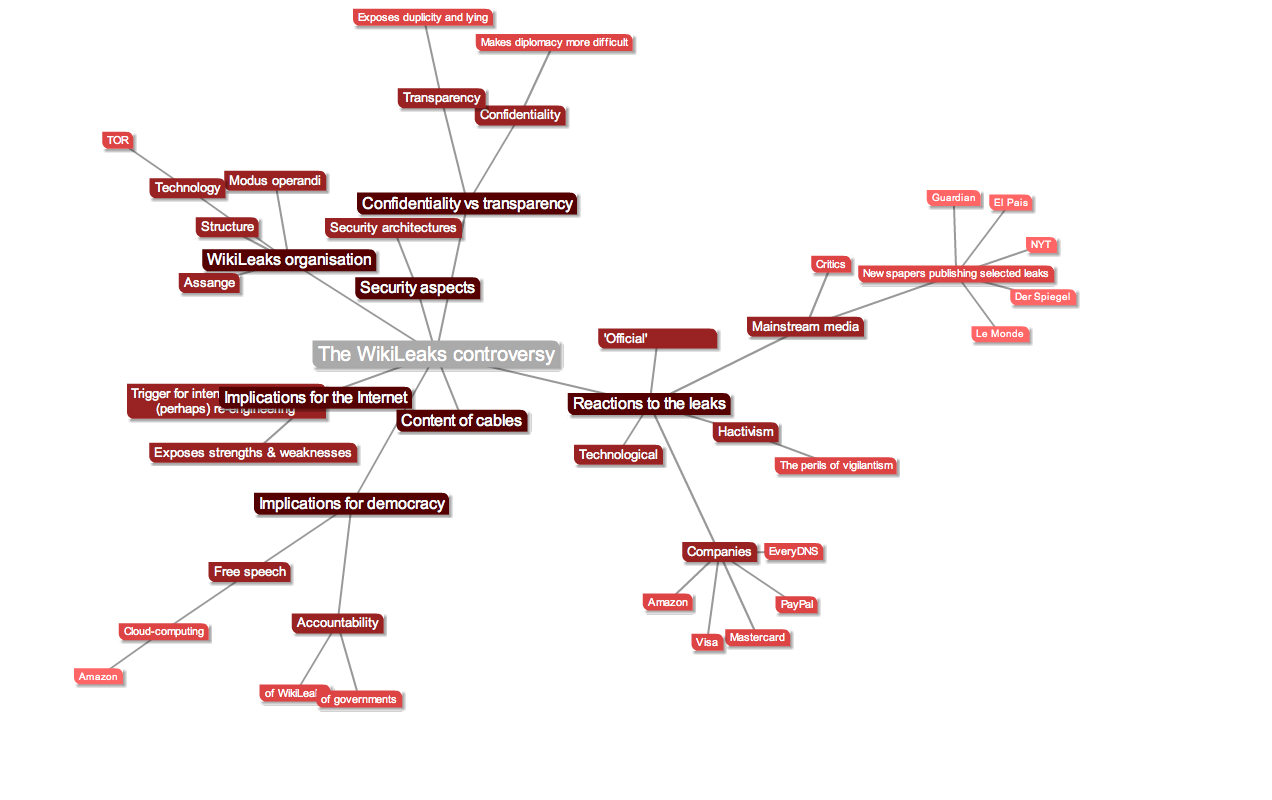Simon Andrewes came to Cambridge last week to give an interesting talk in our Arcadia Seminar series on how the organisation of BBC News has changed over the last decade in response to the need to make financial savings and to address the demands of our emerging media ecosystem. One of the things that interested me particularly was his sketch of the powerful tools the BBC is building to enable its journalists to keep on top of complex, fast-moving stories. Among other things, these new IT tools enable the Beeb to create ‘story communities’ based on its staff across the world who are working on aspects of a big story.
The WikiLeaks controversy is, par excellence, such a story and, like many bloggers, academics and media commentators, I’ve been struggling to (a) keep up with it, and (b) make sense of it. Neither task is easy. Here’s a concept map I drew when first thinking about it. (Click on the map to see a more readable version.)
And this is just a very incomplete sketch of it. Yet onto each blob on the map I could map dozens of cogent references, commentaries and websites. So merely ‘keeping up’ with the story is a Herculean, not to say Sisyphean, task.
The second great challenge is how to make sense of all this. Most people cope with this problem by, effectively, reducing its variety. They decide to take a particular view — which enables them to slash a path through the thicket by choosing which aspects to pay attention to, and which to ignore. But what if one declines to take this simplifying route?
We need tools to help with this.
Sensemaking is what my Open University colleague Simon Buckingham-Shum has been working on for years. He calls it knowledge cartography and has developed tools like Compendium, a software tool for mapping information, ideas and arguments. This screencast gives a good overview of what’s involved in using the tool.
UPDATES:
1. The concept map has been updated to remove an incorrect reference to EasyDNS. Wikileaks’s provider of DNS services was EveryDNS. Thanks to everyone who pointed out the error.
2. Interesting visualisation of data about the leaked cables here.

